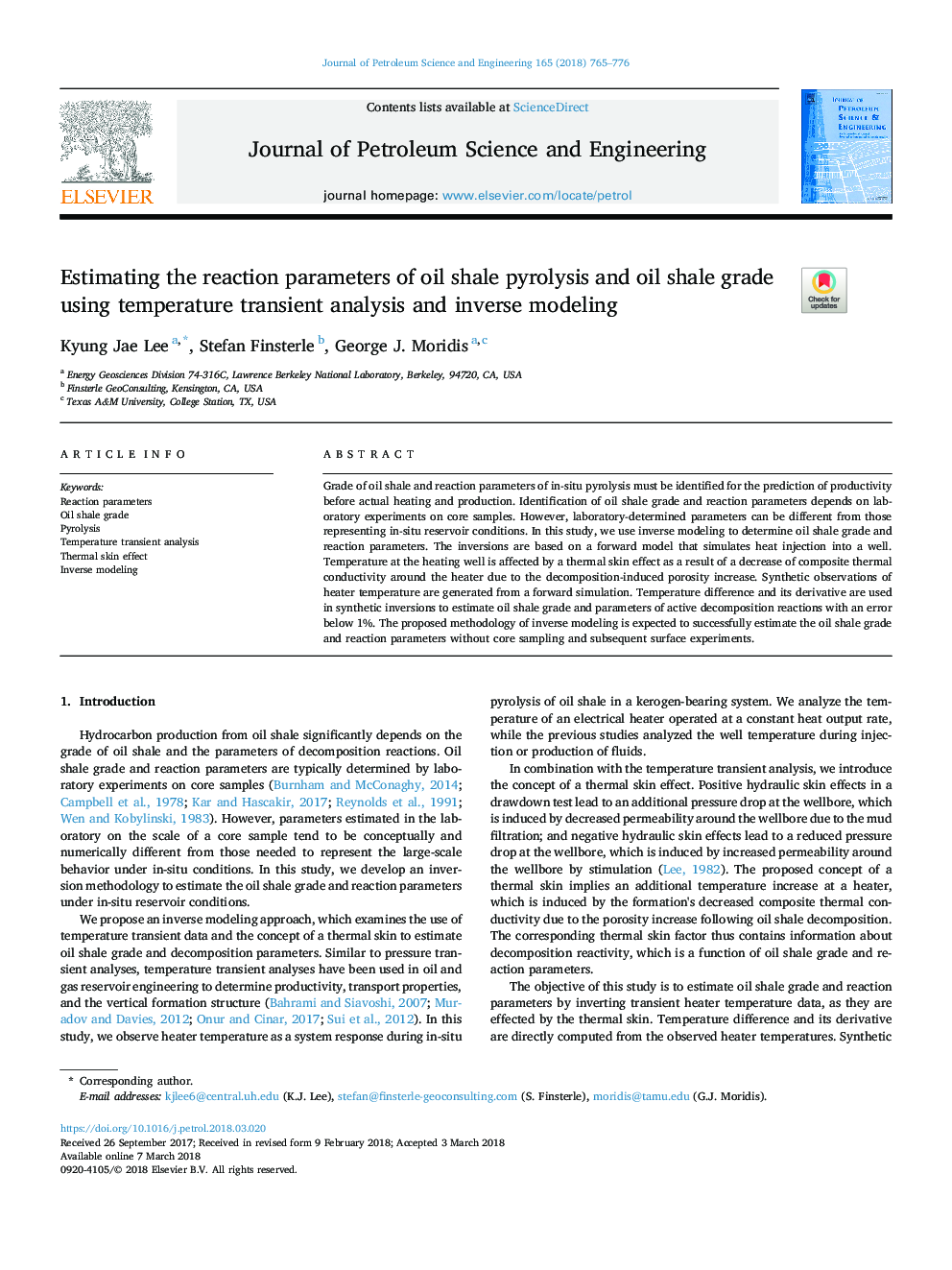| Article ID | Journal | Published Year | Pages | File Type |
|---|---|---|---|---|
| 8125130 | Journal of Petroleum Science and Engineering | 2018 | 12 Pages |
Abstract
Grade of oil shale and reaction parameters of in-situ pyrolysis must be identified for the prediction of productivity before actual heating and production. Identification of oil shale grade and reaction parameters depends on laboratory experiments on core samples. However, laboratory-determined parameters can be different from those representing in-situ reservoir conditions. In this study, we use inverse modeling to determine oil shale grade and reaction parameters. The inversions are based on a forward model that simulates heat injection into a well. Temperature at the heating well is affected by a thermal skin effect as a result of a decrease of composite thermal conductivity around the heater due to the decomposition-induced porosity increase. Synthetic observations of heater temperature are generated from a forward simulation. Temperature difference and its derivative are used in synthetic inversions to estimate oil shale grade and parameters of active decomposition reactions with an error below 1%. The proposed methodology of inverse modeling is expected to successfully estimate the oil shale grade and reaction parameters without core sampling and subsequent surface experiments.
Related Topics
Physical Sciences and Engineering
Earth and Planetary Sciences
Economic Geology
Authors
Kyung Jae Lee, Stefan Finsterle, George J. Moridis,
